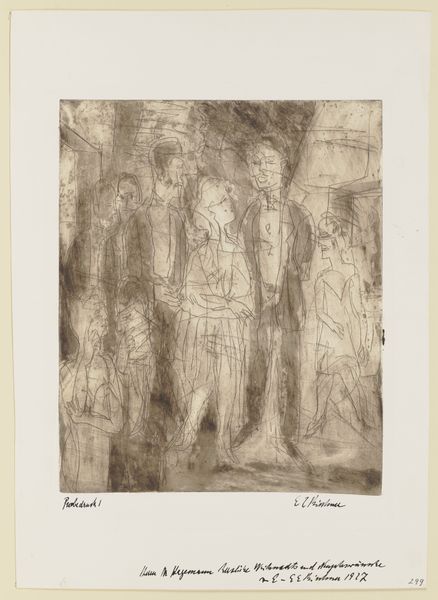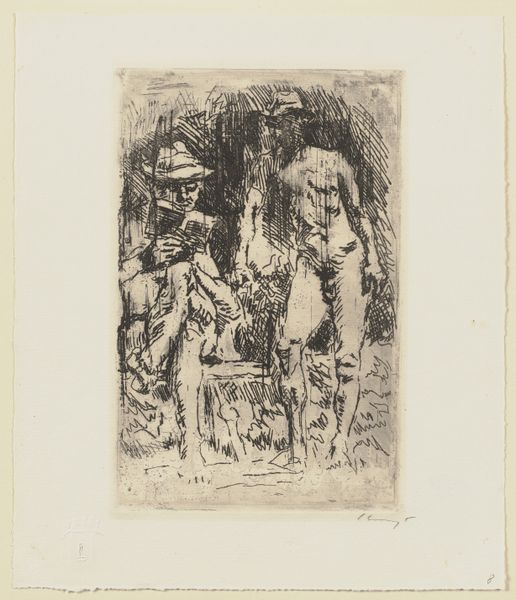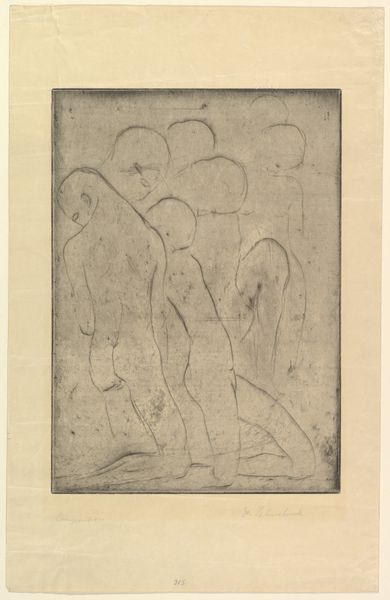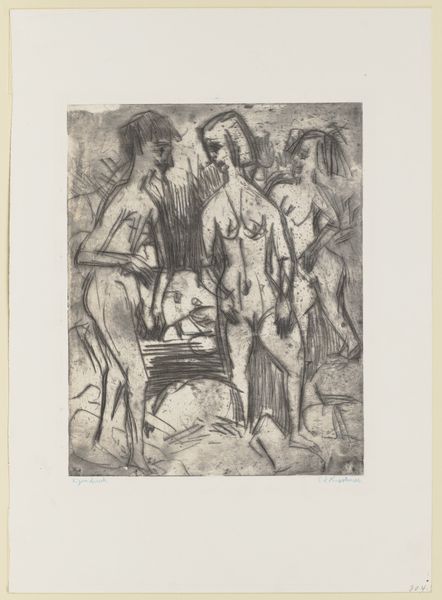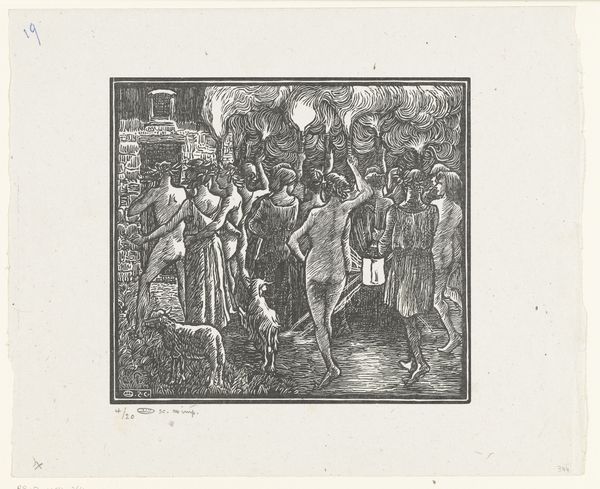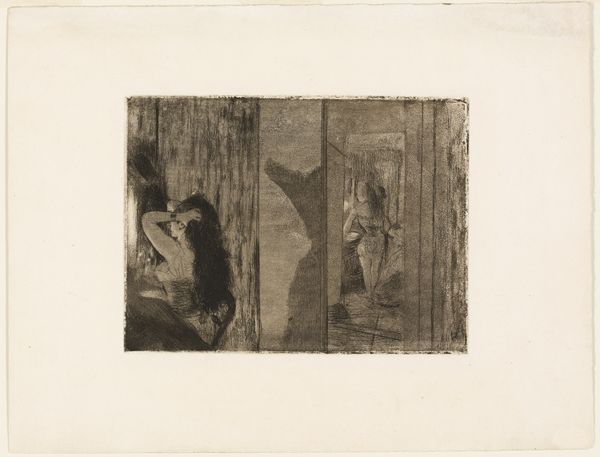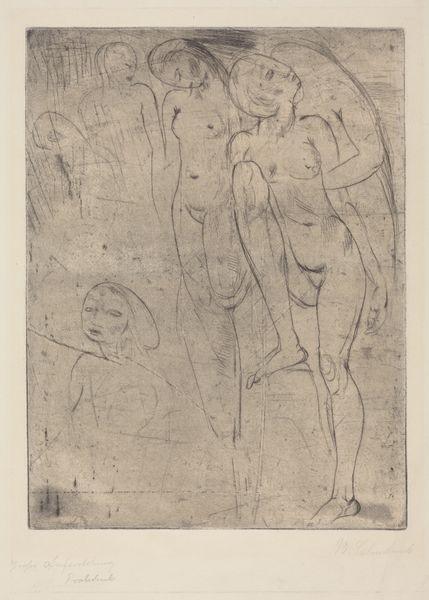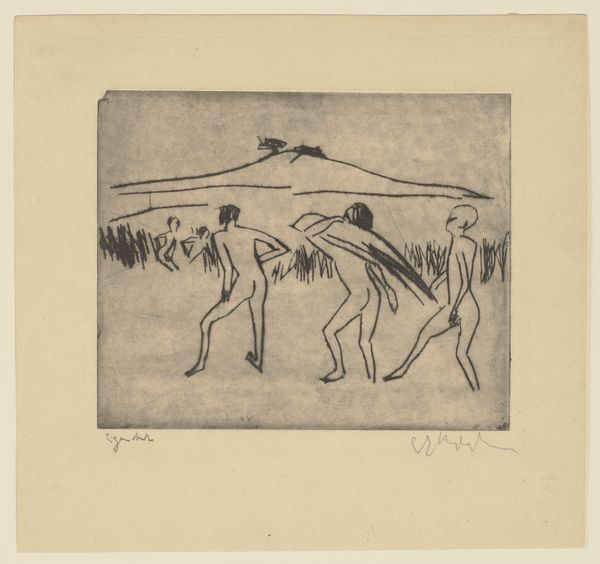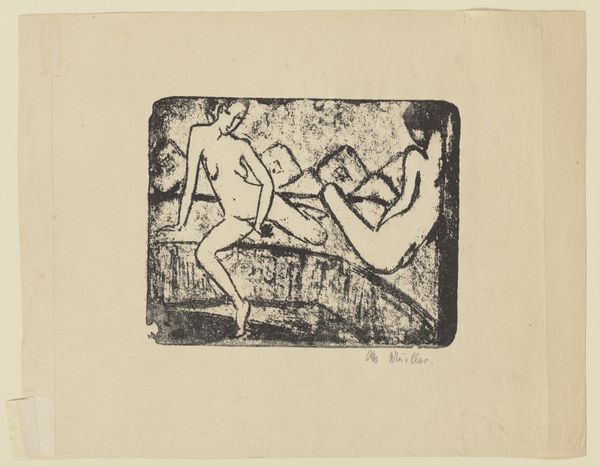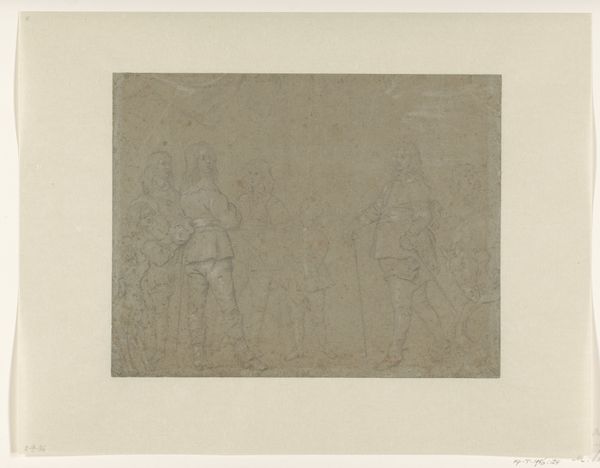
Tombe van Seti I (KV17) in de Vallei der Koningen, Thebe (Luxor) c. 1870 - 1890
0:00
0:00
photography, gelatin-silver-print
#
portrait
#
ancient-egyptian-art
#
photography
#
ancient-mediterranean
#
gelatin-silver-print
#
history-painting
Dimensions: height 218 mm, width 277 mm
Copyright: Rijks Museum: Open Domain
Curator: This gelatin-silver print captures a scene from the tomb of Seti I in the Valley of the Kings, near Thebes—modern Luxor. It was produced by C. & G. Zangaki sometime between 1870 and 1890. Editor: My first impression is one of immense age and power, but rendered in such delicate, almost ethereal tones. It's fascinating to see something so ancient mediated through a relatively modern medium. The grayscale seems to emphasize the timeless quality. Curator: Precisely. Photography in this era played a crucial role in disseminating images of ancient sites, influencing popular understanding and appreciation for ancient Egyptian art and culture. Consider how different this is from earlier modes of circulation like etchings or drawings! It brings a certain... authenticity. Editor: Absolutely, it suggests an unmediated view, even though, of course, it isn't. What do you make of the figures depicted, Iconographer? I notice the hieroglyphs looming, adding another layer to the narrative. Curator: To me, the scene is permeated with echoes of ancient rituals and beliefs. Look at the postures and expressions - they convey an air of solemnity, reverence even. The consistent use of profile views holds significance, a symbolic choice that has resonated for millennia, depicting authority and tradition. Editor: And notice how the photographic process itself adds another layer. The light and shadow enhance the textures of the carved reliefs. This photograph allows 19th-century viewers—and us—a close encounter with something incredibly distant in time. How were such images viewed, circulated, received do you think? Curator: I think there was and perhaps still remains an element of romantic exoticism involved in encountering images from ancient Egypt; but, I think there’s an under-acknowledged element of visual continuity. Hieroglyphs are read as divine language in numerous esoteric traditions for example, and even without understanding it fully, people sense something fundamental to human expression within the symbols. Editor: That is insightful, reminding us that our interaction with the artwork doesn't happen in a vacuum. Social, cultural, and technological forces have always shaped our viewing. Seeing this photograph, placed as it is within a specific moment, allows a dialogue with history on so many fronts. Curator: Indeed. The past continues to speak, if we learn how to listen. Editor: Beautifully said.
Comments
No comments
Be the first to comment and join the conversation on the ultimate creative platform.

